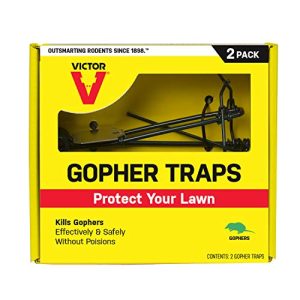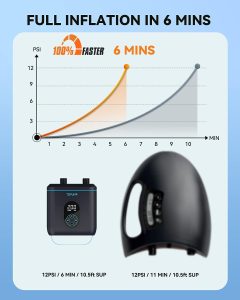Contents
Imagine going on a relaxing vacation, knowing that your beloved betta fish is well taken care of even in your absence. In this article, you will discover simple and effective methods to ensure your betta fish is properly fed while you enjoy your time away. Say goodbye to worrying about your fish going hungry or being overfed, as we provide you with practical tips to make sure your betta stays healthy and happy during your vacation.
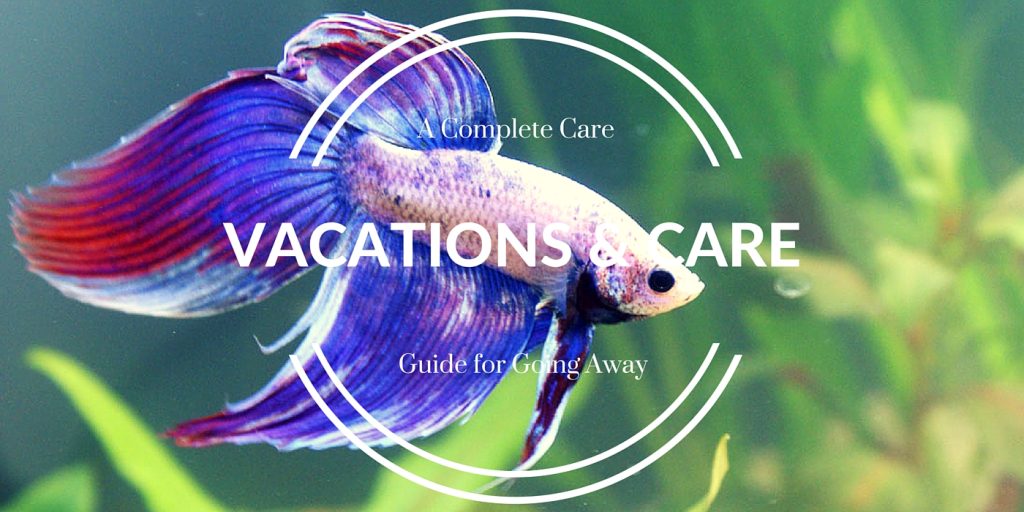
Preparing for Vacation
Going on vacation is exciting, but it’s important not to forget about the well-being of your beloved betta fish. These beautiful creatures rely on you for their care, even when you’re away. By properly preparing for your vacation, you can ensure that your fish will be well-fed and taken care of in your absence. Here are some essential steps to follow before you embark on your vacation.
Find a reliable fish sitter
One of the best ways to ensure that your betta fish receives proper care while you’re away is to find a reliable fish sitter. Look for someone who has experience with fish, such as a friend or family member who owns their own aquarium. Make sure to provide them with detailed instructions on feeding and caring for your fish.
Invest in an automatic fish feeder
An automatic fish feeder is a great investment for any fish owner, especially if you frequently travel. These devices are designed to dispense pre-measured amounts of food at set intervals, ensuring that your fish are fed even when you’re not around. By investing in a high-quality automatic fish feeder, you can have peace of mind knowing that your betta fish will receive their meals on time.
Set up a feeding schedule
Before you leave for your vacation, it’s essential to establish a feeding schedule for your betta fish. Decide how many times a day you normally feed your fish and replicate this schedule with the automatic fish feeder. Consistency is key when it comes to betta fish care, so try to maintain their regular feeding routine even when you’re not physically there to feed them.
Choosing an Automatic Fish Feeder
When it comes to choosing the right automatic fish feeder for your betta fish, there are a few factors to consider. Not all feeders are created equal, so it’s important to do your research and select one that suits your needs and the needs of your fish. Here are a few key points to keep in mind when making your decision.
Consider tank size and dimensions
The size of your betta fish’s tank and its dimensions play a crucial role in determining the type of automatic fish feeder you should choose. Some feeders are designed specifically for smaller tanks, while others can accommodate larger tanks. Be sure to check the specifications of each feeder to ensure that it will fit properly and function optimally in your tank.
Check feeding options and capacity
Different feeders offer various feeding options and capacities. Some may only dispense pellets or flakes, while others have the functionality to accommodate different types of food, such as freeze-dried or live food. Consider what type of food you typically feed your betta fish and choose a feeder that can accommodate it. Additionally, check the feeder’s capacity to ensure that it can hold enough food for the duration of your vacation.
Research user reviews and ratings
Before making a final decision on an automatic fish feeder, take the time to read user reviews and ratings. Hearing from other fish owners who have used the feeder can provide valuable insights into its performance and reliability. Look for feeders that have consistently positive reviews and high ratings to ensure that you’re making a wise investment.

Setting Up the Automatic Feeder
Once you have chosen the perfect automatic fish feeder for your betta fish, it’s crucial to set it up correctly before you leave for your vacation. This ensures that the feeder will dispense the right amount of food at the right time, keeping your fish well-fed and happy in your absence. Here’s what you need to do.
Read the user manual
Before setting up the automatic fish feeder, take the time to thoroughly read the user manual. Each feeder may have slightly different setup instructions and it’s important to follow them carefully. This will ensure that you understand how the feeder works and how to adjust its settings as needed.
Adjust the feeding amount and frequency
Once you’re familiar with the feeder’s operation, adjust the feeding amount and frequency to match your betta fish’s regular feeding routine. Most automatic feeders have options to adjust the portion size and the number of feedings per day. Take into consideration the size and appetite of your betta fish to ensure that they receive the appropriate amount of food.
Test the feeder before leaving
Before you leave for your vacation, it’s vital to test the automatic feeder to ensure that it’s functioning correctly. Fill it with a small amount of food and run a test cycle to observe how it dispenses the food. This step allows you to make any necessary adjustments and ensures that the feeder will work consistently while you’re away.
Alternate Feeding Options
While an automatic fish feeder is an excellent solution for feeding your betta fish during your vacation, there are a few alternative options you can consider. These options can serve as backups in case the automatic feeder fails or as additional measures to ensure your fish’s well-being.
Utilize slow-release vacation feeders
Slow-release vacation feeders are another popular option for vacation feeding. These feeders typically consist of blocks or gels that slowly dissolve and release food into the water. They can provide sustenance for your betta fish over an extended period, but they are not as precise as automatic feeders when it comes to portion control.
Use DIY feeding methods
If you prefer a hands-on approach, you can prepare DIY feeding methods for your betta fish. One simple option is to freeze small portions of food, such as bloodworms or brine shrimp, in ice cube trays. The frozen food can then be placed in the tank throughout your absence, allowing your fish to nibble on it as it melts. This method allows for controlled feeding and can be an enjoyable form of entertainment for your betta fish.
Ask a friend for help
If you have a trusted friend or family member living nearby, you can ask them to stop by your home and feed your betta fish. Provide them with clear instructions and ensure that they understand the importance of maintaining the feeding schedule. Having someone physically check on your fish also allows for early detection of any potential issues or emergencies.
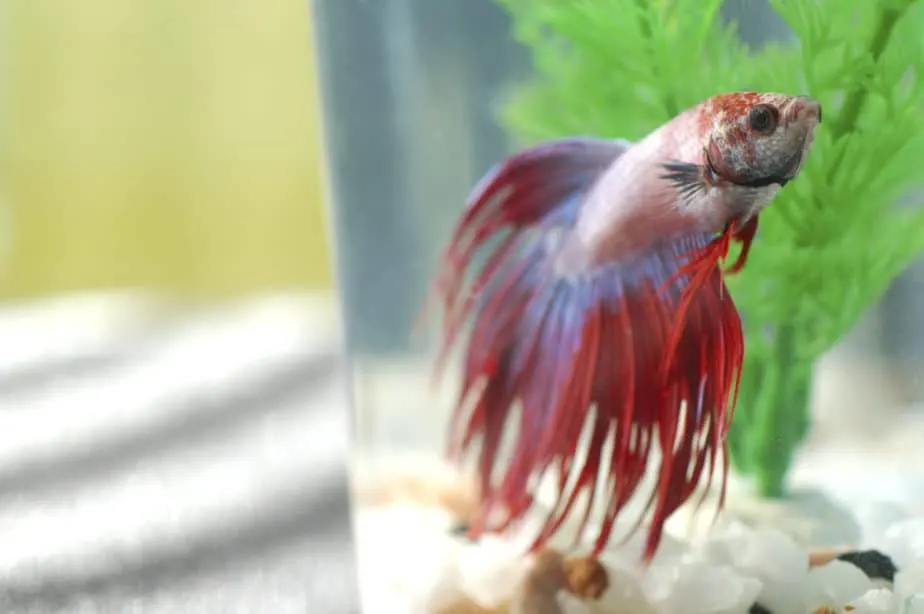
Ensuring Water Quality
Proper water quality is essential for the health and well-being of your betta fish. Before leaving for your vacation, take steps to ensure that the water in your fish tank remains clean and suitable for your fish. By following these guidelines, you can minimize the risk of water-related problems while you’re away.
Perform a water change before leaving
Performing a water change before leaving for your vacation helps to remove any built-up waste or toxins in the tank. Aim for a 25-30% water change, but be sure not to disrupt the tank’s established ecosystem too much. Clean the substrate and any decorations as needed, and replace the water with conditioned water of similar temperature and quality.
Use a water conditioner
Adding a water conditioner to your betta fish’s tank is crucial for maintaining water quality. Water conditioners help to remove harmful chlorine, chloramines, and heavy metals from tap water, making it safe for your fish. When using a water conditioner, follow the instructions provided by the manufacturer and ensure that you use the proper dosage for your tank size.
Monitor water temperature
Betta fish are sensitive to fluctuations in water temperature. It’s important to ensure that the tank’s water temperature remains stable while you’re away. Consider using a reliable aquarium heater and a thermometer to maintain the optimal temperature range for your betta fish. Also, ensure that the heater is functioning properly and set to the appropriate temperature before you leave.
Monitoring Fish Health
Ensuring the well-being of your betta fish goes beyond just feeding and maintaining water quality. Before you leave, take steps to monitor your fish’s health and provide necessary information to your fish sitter or backup caretaker in case of emergencies.
Observe fish behavior before leaving
Before you depart on your vacation, carefully observe your betta fish’s behavior. Look for any signs of illness or distress, such as lethargy, loss of appetite, or unusual swimming patterns. If you notice any abnormalities, take the necessary steps to address them before you leave or provide clear instructions to your fish sitter on how to handle the situation.
Leave emergency contact for fish sitter
In case of any emergencies or unexpected events, it’s crucial to provide your fish sitter or backup caretaker with your contact information. Make sure they have your phone number and any other relevant information so they can reach you if needed. Additionally, provide them with contact information for a trusted fish store or veterinarian who can offer guidance in case of emergency situations.
Prepare a quarantine tank
It’s always a good idea to have a quarantine tank set up and ready to use in case your betta fish becomes ill or needs isolation. A separate tank allows you to isolate and monitor any sick or injured fish without risking the health of the other fish in your main tank. Leave clear instructions for your fish sitter on how to use the quarantine tank if necessary.
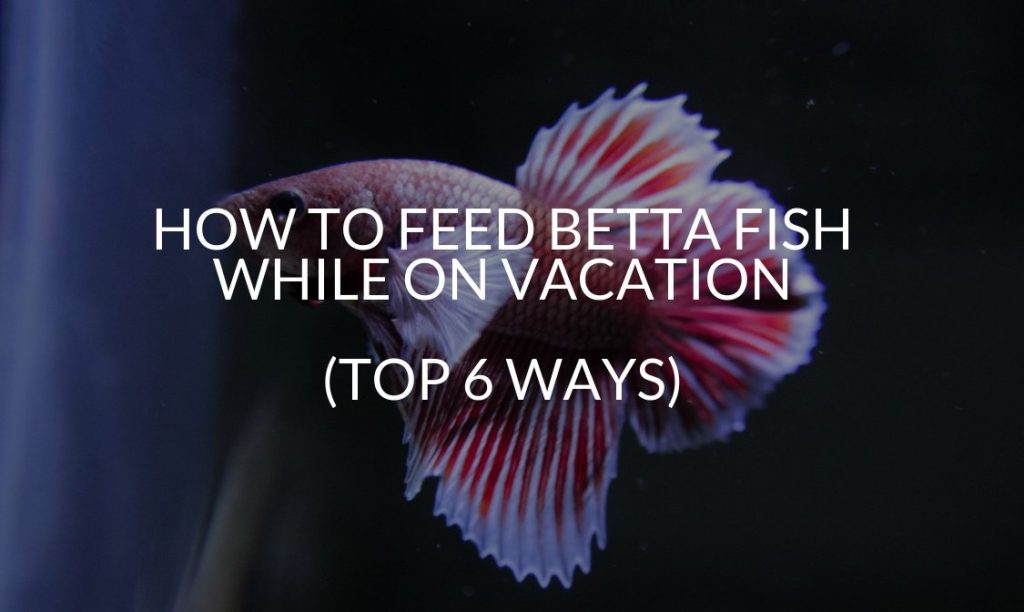
Preparing Fish Food
Feeding your betta fish with nutritious and appropriate food is vital for their overall health and well-being. Before you leave for your vacation, take the time to prepare their food in a way that ensures freshness and portion control.
Decide on a suitable food type
Consider the specific dietary needs of your betta fish and choose a suitable food type. Betta fish typically thrive on a varied diet that includes high-quality pellets or flakes as the main staple, supplemented with occasional live or freeze-dried foods, such as bloodworms or brine shrimp. Ensure that the food you choose provides the necessary nutrients for your betta fish’s well-being.
Freeze-drying or freezing food
To maintain the freshness and quality of your betta fish’s food, consider freeze-drying or freezing it before your departure. This process helps to preserve the nutritional value and prevents the growth of harmful bacteria. Follow the manufacturer’s instructions for freeze-drying or freezing the food, and store it in an airtight container to maintain its freshness.
Portion and store food properly
Proper portion control is crucial when it comes to feeding your betta fish. Overfeeding can lead to health issues, such as bloating or constipation. Before leaving, divide the prepared food into appropriate portions and place them in sealed containers or bags labeled with the feeding instructions. This makes it easier for your fish sitter or backup caretaker to provide the right amount of food at each feeding.
Supplementary Measures
In addition to the essential steps mentioned above, there are a few supplementary measures you can take to ensure the well-being of your betta fish during your vacation. These measures provide additional support and help to maintain a stable and stress-free environment for your fish.
Adjust tank lighting and cover
While you’re away, it’s a good idea to adjust the tank lighting to mimic natural day and night cycles. Use a timer to automatically turn the lights on and off at appropriate times. This helps to maintain a regular routine for your betta fish and promotes their overall well-being. Additionally, consider covering the tank with a dark cloth or towel during the night to provide a sense of security and help reduce stress.
Maintain a stable environment
Betta fish thrive in a stable and consistent environment. Before leaving, make sure that all equipment, such as filters, heaters, and air pumps, is functioning properly. Test the water parameters to ensure that they are within the appropriate range for your betta fish. By maintaining a stable environment, you minimize the chances of stress-related health issues occurring while you’re away.
Consider a backup plan
Even with the most careful planning, unexpected events can occur. It’s always a good idea to have a backup plan in place in case your primary feeding method fails or other unforeseen circumstances arise. This can include having an additional person available to check on your fish or enlisting the help of a professional pet sitter who has experience with fish care.
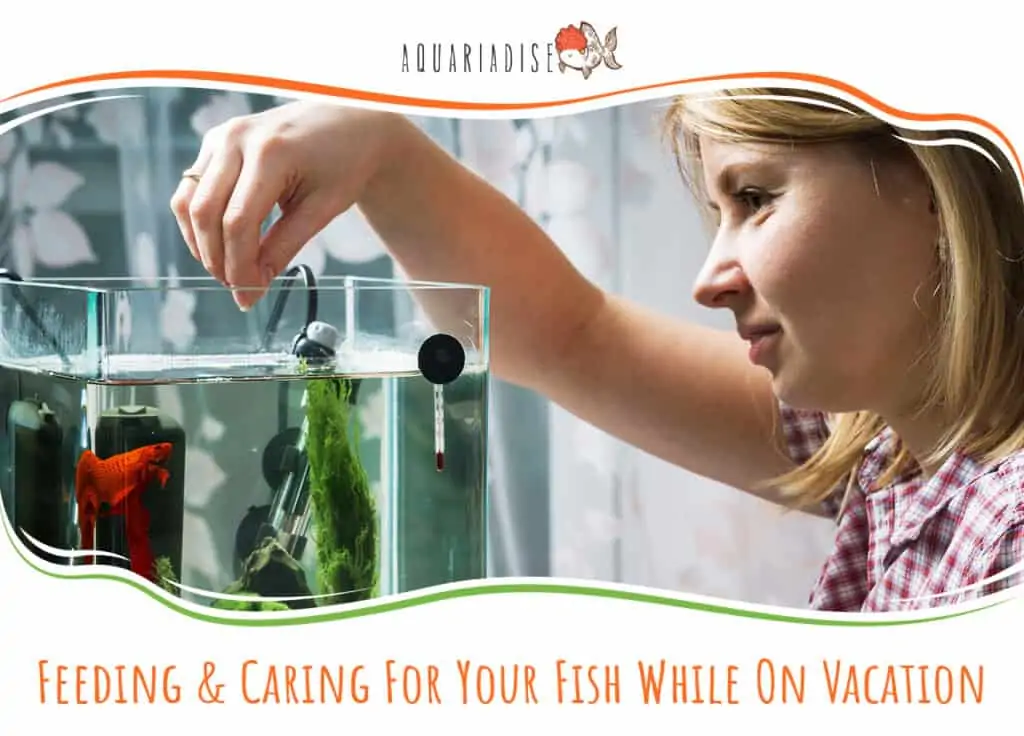
Returning from Vacation
Coming back from your vacation is an exciting time, but it’s important to prioritize your betta fish’s well-being upon your return. Follow these steps to ensure a smooth transition and a healthy, happy homecoming for your fish.
Check fish health and water parameters
Once you’re back home, take the time to carefully observe your betta fish and assess their overall health. Look for any signs of illness, stress, or changes in behavior. Test the water parameters to ensure that they are within the appropriate range. If any issues arise, address them promptly to prevent further complications.
Gradually resume regular feeding
After your return, gradually transition your betta fish back to their regular feeding routine. Start with small portions and gradually increase the amount as your fish readjusts to normal feeding. By allowing them time to acclimate, you minimize the risk of digestive issues or overfeeding.
Thank your fish sitter
Don’t forget to thank your fish sitter or backup caretaker for taking care of your betta fish while you were away. Show your gratitude by offering a small token of appreciation or simply expressing your sincere thanks. Building a positive relationship with your fish sitter ensures that you can rely on them for future care, providing you with peace of mind during future vacations.
Common Mistakes to Avoid
When it comes to caring for your betta fish while on vacation, there are a few common mistakes that you should avoid. By being aware of these potential pitfalls, you can ensure the well-being of your fish and enjoy your vacation with peace of mind.
Overfeeding your betta fish
Overfeeding is one of the most common mistakes that fish owners make. It can lead to various health issues, including bloating, constipation, and poor water quality. Follow the recommended feeding guidelines for your betta fish and ensure that your fish sitter is aware of them as well.
Not testing automatic feeder in advance
Failing to test your automatic fish feeder before your vacation is a recipe for disaster. A malfunctioning feeder can either overfeed or underfeed your betta fish, leading to health problems. Always run a test cycle with the feeder to ensure that it functions properly and dispenses the correct amount of food.
Neglecting fish health preparations
Many fish owners focus solely on feeding arrangements and neglect other crucial aspects of fish care. The health and well-being of your betta fish should always be a top priority. Ensure that you perform necessary water changes, monitor water parameters, and observe your fish’s behavior before leaving for your vacation. Taking these extra steps can help prevent potential health issues and ensure a happy and healthy fish upon your return.
By following these comprehensive guidelines, you can confidently leave for your vacation, knowing that your betta fish are well-cared for. Properly preparing their feeding, water quality, health monitoring, and other essential aspects ensures that they will thrive in your absence. Enjoy your vacation, safe in the knowledge that your fish are in good hands!






